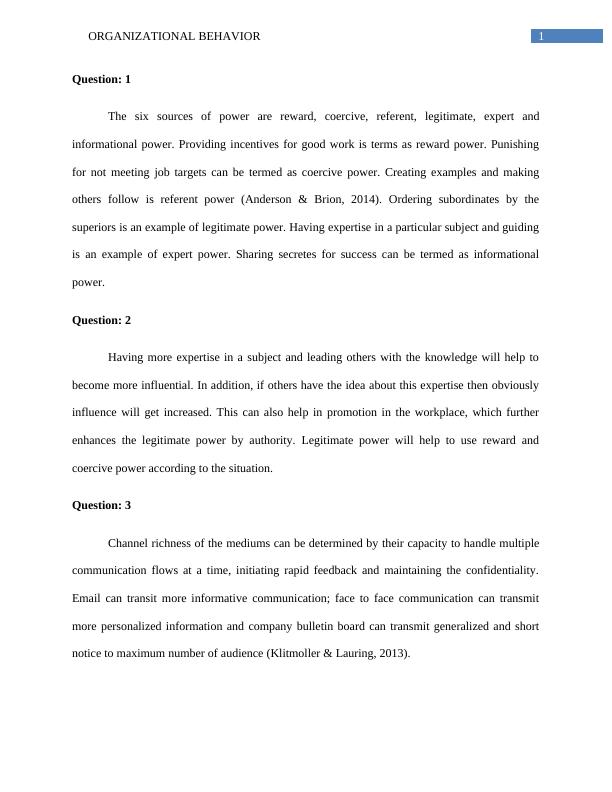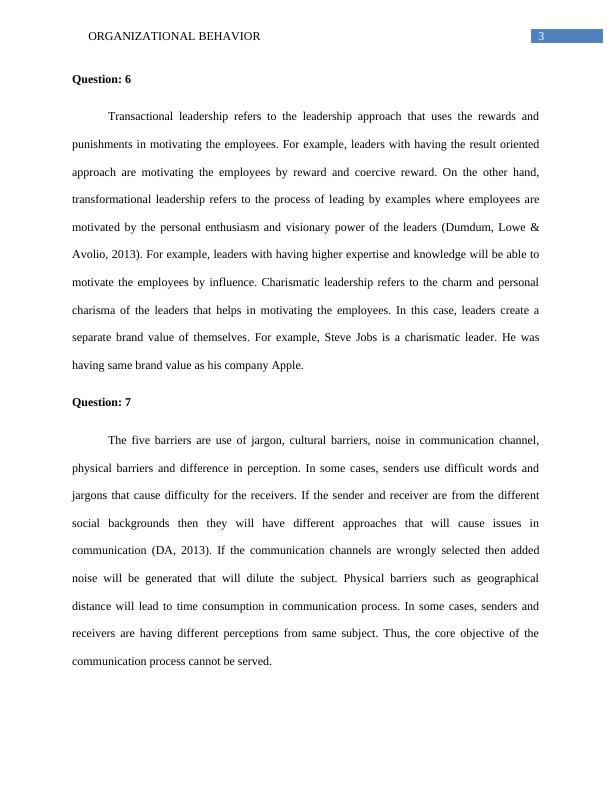Organizational Behavior: Understanding Power, Communication, Leadership, Motivation, and Culture
This study guide covers various topics in Organizational Behavior including sources of power, gaining influence, communication channels, leadership behaviors, communication process model, leadership styles, barriers to effective communication, bargaining approaches, conflict styles, decision making model, organizational culture, change model, and team effectiveness.
Added on 2023-06-09
About This Document
Organizational Behavior: Understanding Power, Communication, Leadership, Motivation, and Culture
This study guide covers various topics in Organizational Behavior including sources of power, gaining influence, communication channels, leadership behaviors, communication process model, leadership styles, barriers to effective communication, bargaining approaches, conflict styles, decision making model, organizational culture, change model, and team effectiveness.
Added on 2023-06-09
End of preview
Want to access all the pages? Upload your documents or become a member.




